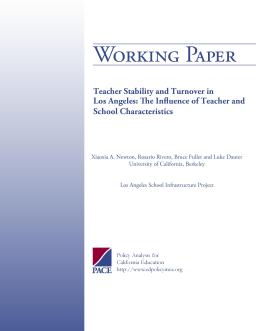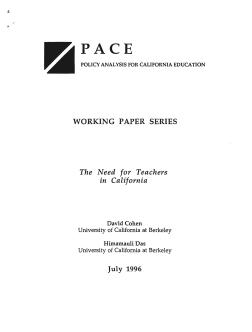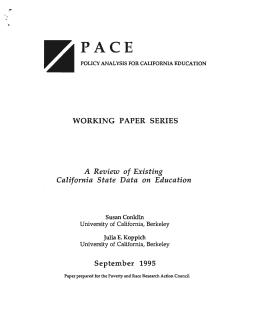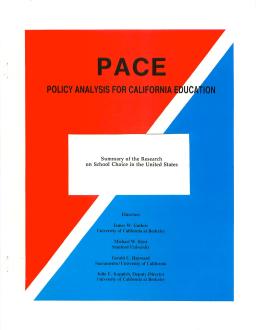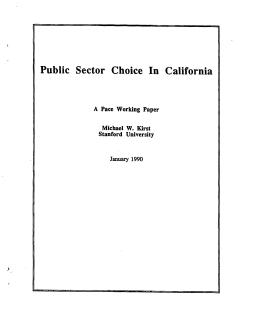The Influence of Teacher and School Characteristics
Published
Summary
This study explores how teacher characteristics and school context affect the timing of teacher exits from schools, using a two-level discrete-time survival analysis framework. Results for Los Angeles Unified School District show that school context is crucial, especially type of school and organizational characteristics, beyond individual teacher qualifications. Differences between elementary and secondary teachers are also observed.
Framing the Issues in Community Colleges
Published
Summary
This paper series addresses the issue of basic skills instruction in California Community Colleges. The problem is twofold: a high proportion of students enter college needing developmental courses, and these students are unlikely to move into college-level work. The research focuses on instructional issues, with observations and interviews to understand classroom and institutional settings. The subsequent papers in the series will cover various hypotheses for why success rates in basic skill instruction are not higher.
California’s Quality Education Investment Act
Published
Summary
This working paper examines the use of Quality Education Investment Act (QEIA) funds, which allocated $2.6B over seven years to California's lowest-performing schools. The authors conducted a study of four Los Angeles high schools to investigate how QEIA dollars were spent in the first year, who made the decisions, and how funds were used to improve teaching and the instructional program. The study found that district officials and principals had discretion in allocating funds, consistent with recent efforts to deregulate categorical-aid programs and give local educators fiscal discretion.
Published
Summary
This baseline analysis examines the projected need for teachers in California based on student enrollment projections, expected rates of new teachers and teacher retirements. However, it does not take into account recent policy changes such as the budget's call for reductions in class size or the proposed changes to teacher credentialing requirements. These changes will impact the need for teachers in California. The analysis shows regional teacher shortages, which are expected to persist despite the new policies.
Published
Summary
The 1995-96 California state budget increased K-12 education funding by $1 billion, but the additional funds were meant to be used for non-recurring expenses like deferred maintenance and facility upgrades. Lottery revenues were also intended for non-recurring expenses, but schools have come to rely on them for their core instructional program, despite decreasing revenues. This paper reviews the history of the California State Lottery as a funding source for schools and how non-recurring costs are interpreted in a system with shortfalls in core programs.
Published
Summary
This report is part of the Poverty and Race Research Action Council's state data reconnaissance project, which aims to provide a guide to education data available in California for researchers and policymakers. PACE gathered the education data, which is presented in a catalogue of raw data sets and published reports from state, federal, and non-governmental agencies, along with a matrix showing which data are collected by which sources. Appendices provide more detail on specific data sets.
Published
Summary
The paper provides a synthesis of existing literature on school choice, with a focus on research that informs public policy development and evaluation. It presents information without taking a position for or against school choice and is intended for policymakers, parents, educators, and the public. The paper covers six sections, including types of school choice programs, efficacy, economic theories, private schools, public opinion, and unresolved research questions.
A PACE Working Paper
Published
Summary
California saw renewed interest in the issue of education choice in the late 1980s, with 11 bills introduced in the 1989 legislative session. The primary reason for this is the reluctance to consider public aid to private schools. California State Superintendent Bill Honig proposed AB 2134, which would require parents to choose a public school each year. The politics of choice have changed, and low-cost proposals that don't promote alternative school sites have become popular. This paper analyzes the California bills and their implications for education choice in California.
